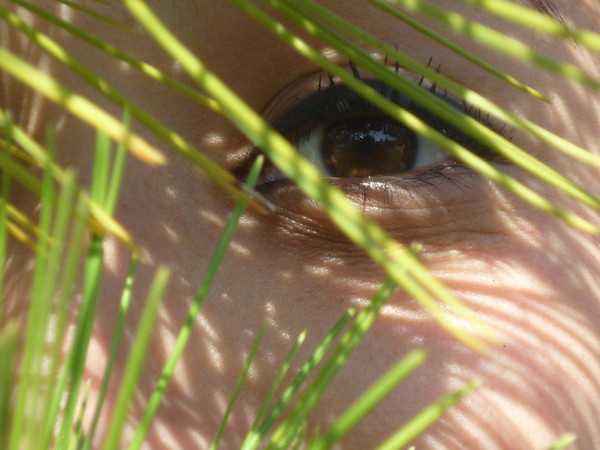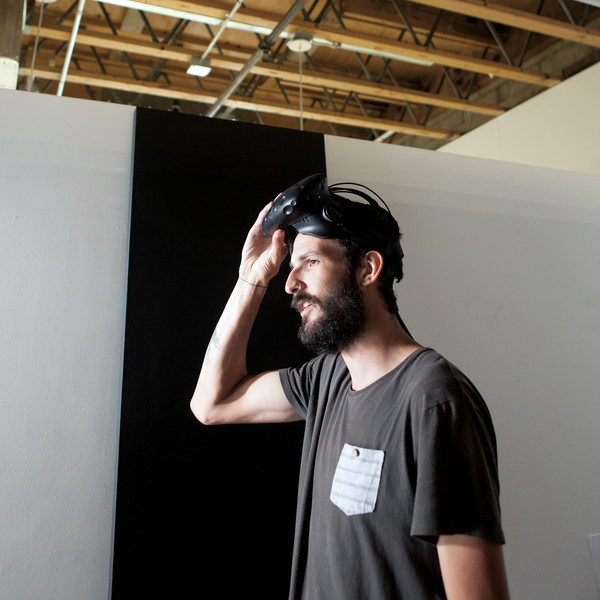
feature / event / alumni / faculty / students / photography-and-imaging / sponsored-projects
April 04, 2014
Writer: Sylvia Sukop
Creative disruption: Image strategists on photography’s new frontier
“The advent of new technologies and a global population consumed by social media have turned photography on its head,” says Dennis Keeley, chair of Art Center’s Photography and Imaging Department. “The profession now demands a daunting versatility for survival—including skills in entrepreneurship, computational competency and critical thinking. Image-making now extends well beyond the traditionally constructed photograph to more immediate and interconnected processes. These contemporary practices and ideas utilize art, science and communications, and demand an intellectual flexibility, collaborative spirit, and a willingness to engage the world with strategy.”
To prepare photography students to meet the demands of this rapidly changing profession, Keeley and his colleagues developed a pilot class this Spring, Creative Disruption: Beyond the Classroom. Co-led by Everard Williams, Ann Cutting and Elisa Callow, the class embeds students in local nonprofits where they’re given a creative challenge and work in collaboration with the partner organization to tackle that challenge.
The class is part of an Art Center study, funded by a grant from the Annenberg Foundation, investigating and testing models for the future of photographic education.
Read on to learn about our first two Annenberg Apprentices, and their innovative work with two community-based organizations, CicLAvia and the Japanese American Cultural and Community Center.
It’s an interesting time for photography. Up till the ’80s and ’90s there was one pathway to success. Today there are all these weird, spaghetti-like, seemingly disparate paths.
Kevin Reeve Creative Disruption student
CicLAvia
This coming Sunday, April 6, the car will not be king in Los Angeles. In a friendly overthrow, the bicycle will reign for a day.
The latest CicLAvia event, which shuts down large swaths of the city’s streets to traffic, is expected to bring some 100,000 cyclists and pedestrians out onto a six-mile stretch of iconic Wilshire Boulevard running from downtown, through MacArthur Park, Koreatown and the Miracle Mile, all the way to Fairfax Avenue.
In just a few short years, CicLAvia has gone from quixotic dream to urban routine, something Angelenos have come to embrace and expect. Last year National Geographic’s travel blog called it one of the world’s “10 Must-dos in June.” But it’s more than just a fun, one-day event. CicLAvia is helping to catalyze whole new possibilities—year-round—for public space, transportation and health in America’s second-largest city.
CicLAvia’s brief but powerful history is captured in a new, widely disseminated, online visual narrative, Our Story, curated by recent ArtCenter graduate Dave Koga (BFA 13 Photo) and picked up by outlets including NBC-TV. It’s designed to celebrate and inspire participation in the event but also to support advocates and influence policymakers around ways to make L.A. a healthier, more livable city.
Koga explains the genesis of his project: As a participant in the Creative Disruption class, Koga carried out his Annenberg Apprenticeship with Swell Creative Group, a Los Angeles agency that does branding, social media and web design for nonprofit and social enterprise clients.
“Swell brought CicLAvia on as a client, and they wanted to show their history. CicLAvia had an archive of over 1,200 images taken by lots of different photographers. I curated those down, making sure they had a cohesive order and told a compelling story.”
To underscore the impact of CicLAvia beyond the periodic Sunday bike rides, Koga took additional pictures of bike riders using public transportation; the final set of images in Our Story are his. A copywriter at Swell contributed the text.
Cross-disciplinary collaboration appeals to Koga. “I came to ArtCenter after leaving a 10-year career in the entertainment industry, where I served as a TV development executive. I have a prior degree in history and art history from UCLA. When I made the decision to change careers, ArtCenter was my first choice.”
Koga completed his BFA in December and was awarded an Honors Term—an additional term of study, tuition free—which enabled him to take the Creative Disruption class.
“It’s great to see people embracing alternative forms of transportation in a city that’s so car-centric,” he says. A newcomer to biking himself, he’ll be out riding and photographing this Sunday on Wilshire Blvd. And he’ll be giving his best shots to CicLAvia, for their “living archive” of photographs that he hopes will continue to expand.
Social responsibility is a huge part of what photography can contribute in the world. Photography has always done that—from Matthew Brady and Alexander Gardner to Dorothea Lange and Margaret Bourke-White.
Kevin Reeve Creative Disruption student
Japanese American Cultural and Community Center
Like Koga, Creative Disruption student Kevin Reeve had already achieved career success in a different field before embarking on his studies at ArtCenter. “I was an executive chef and did corporate hospitality management for 19 years,” he says. “I was interested in getting an MFA in addition to my BFA.” He moved to Los Angeles from Denver, was able to transfer academic credits and is now in his 5th term at ArtCenter.
As an Annenberg Apprentice at the Japanese American Cultural and Community Center in downtown Los Angeles, Reeve worked with a curator to develop a series of photo-driven stories focused on Japanese traditions that build and preserve community, including ukulele music, ceremonial floral arranging and Girls’ Day.
An image strategist, unlike a photographer working on assignment, plays a lead role in conceptualizing, shaping and executing these kinds of visual narrative projects. New educational programs like those being developed at ArtCenter are ideal for students like Reeve who bring significant professional and life experience to their work, and look to a future not necessarily as picture-takers but as “creatives at the table,” embedded within organizations and working strategically to help them articulate and achieve their goals through a range of new media.
“It’s an interesting time for photography,” says Reeve. “Up till the ‘80s and ‘90s there was one pathway to success. Today—and we also see this in the guest speakers who come and speak at ArtCenter—there are all these weird, spaghetti-like, seemingly disparate paths.”
One thing, he’s quick to add, has not changed. “Social responsibility is a huge part of what photography can contribute in the world. Photography has always done that—from Matthew Brady and Alexander Gardner to Dorothea Lange and Margaret Bourke-White.”
Meanwhile back at ArtCenter, evaluating students’ nontraditional projects requires a nontraditional set of metrics. “There’s no ‘final’ with hard deliverables like 10 finished prints,” says Reeve. “Instead, we’re evaluated based on our projects’ impact on the partner organization, and our overall productivity and effectiveness.”
Ultimately collaboration is its own reward.
“We strongly believe that one of the most critical initiatives in photography education today is the importance of identifying and building these kinds of partnerships,” says Photography Chair Keeley. “Building relationships with non- and for-profit agencies, with entrepreneurs and with science, helps us offer a clear window through which students can view potential future opportunities, which makes for a more complete and innovative education.”





